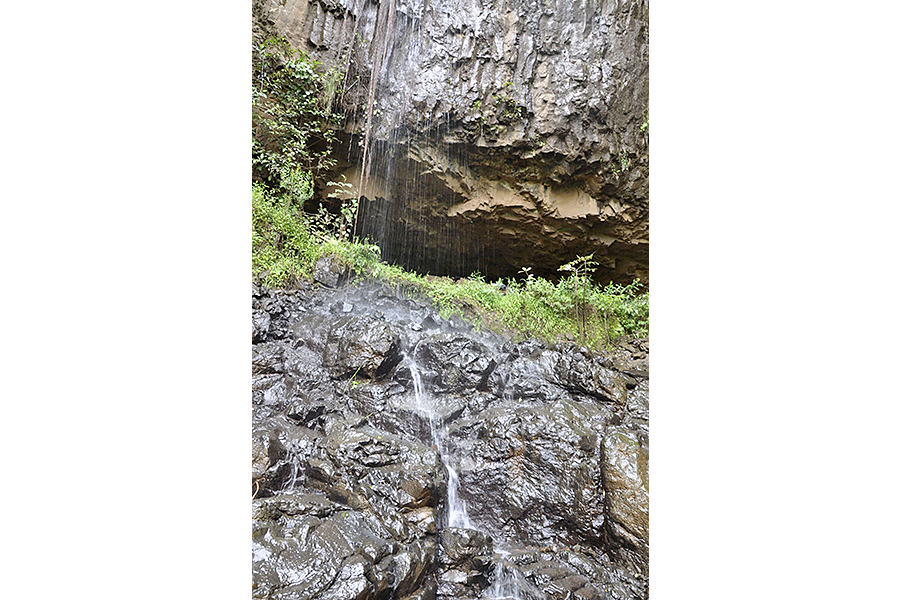3,000 years ago, an early human journey back into Africa
Loading...
Genes from the skeletal remains of an adult human from ancient Ethiopia are shedding new light on a cosmopolitan eastern Africa some 3,000 years ago.
The genome extracted from the remains has helped researchers establish that an influx of people into the region from Eurasia three millenniums ago was significantly larger and spread more broadly into Africa than previously estimated. And it highlights the source – a population with close genetic ties to early Neolithic people, who 4,000 years earlier introduced farming to the European countryside.
The study also undermines a lingering stereotype of Africa as largely isolated until European colonization began, suggests John Arthur, an anthropologist at the University of South Florida, St. Petersburg, and a member of the team reporting the analysis in the current issue of the journal Science.
The results show that “Africans were interacting with the larger world population, especially after 3,000 years ago,” he says.
Where some might see the influx as an “out of Africa” migration thrown in reverse, Dr. Arthur suggests a prolonged period of “interaction between Africans, Europeans, and Eurasians. They are not just trading with each other. They are forming families and building relationships. It's much stronger than the idea of migration.”
The study also has implications for the evolution of people and their culture in southwestern Ethiopia, where the remains were found. It suggests that long before the influx, which researchers call a genetic “backflow,” people in the area already had adapted to living at high altitudes. And it supports the idea that a language used in southwestern Ethiopia today has been used there for more than 4,000 years.
Discovery of the remains, named Bayira, or “first born” in the local Gamo language, was an unexpected byproduct of work the two were undertaking to understand the Gamo's strict, caste-like social structure and how it developed over time.
Working with the culture's elders, John Arthur and his wife, Kathryn, along with Ventura College colleague Matthew Curtis, began reconstructing the culture's history. “We didn't know how far back we could go,” Mr. Arthur recalls.
In 2011, Gamo elders led Kathryn to Mota Cave, which the Gamo used as a hiding place during various wars during the past few centuries. Preliminary excavations in the cave just before the end of the field season yielded Bayira. His 4,500-year-old remains were exquisitely preserved in a burial posture. Most important, it became clear that it might be possible to extract a lot of DNA from his remains, something that no one had been able to do for ancient humans elsewhere in Africa because their remains typically are so badly degraded.
Given Africa's role as the evolutionary cradle for humans, genetic diversity in Africa is vital to understanding the evolution of anatomically modern humans. Yet until now, there has been precious little genetic information on ancient humans available from the continent, especially when compared with ancient humans across the Eurasian continent.
Initial evidence for the existence of genetic backflow from Eurasia 3,000 years ago appeared last year in the Proceedings of the National Academy of Sciences. A team led by Joseph Pickrell at the Harvard Medical School's Howard Hughes Medical Institute analyzed genetic-mixing “events” among groups in southern and eastern Africa. Among the team's findings: Populations in Kenya, Tanzania, and Ethiopia saw an influx of people from western Eurasia between 2,700 and 3,000 years ago.
The new study uses the genome from Bayira, also known as Mota, to help firm up the dating for the influx of western Eurasians into eastern Africa. Bayira's genome, from 1,500 years earlier, showed no trace of Eurasian ancestry. That allowed the team conducting the new study to more clearly define the geographic reach and the magnitude of the backflow as well as the sources of the incoming genes.
Genetically, Bayira is most closely related to today's Ari people in Ethiopia, according to the international team, led by Marcos Gallego Llorente, a researcher at Cambridge University in Britain.
The team used Bayira's genome as a baseline to establish how much of the Ari genome is like Bayira's and how much of the rest might resemble resembles the genomes of current sources within Africa as well as ancient Eurasian sources.
The researchers estimate that up to 25 percent of the genes in the genomes of eastern Africans today contain DNA from the backflow 3,000 years ago. From 4 to 7 percent of the genes in the genomes of people living in southern, central, and west Africa also came from this backflow.
The results also indicate that that migrants returning to Africa from Eurasia came from Neolithic farmers in the Near East and Anatolia who also migrated into Europe.
The triggers for this backflow remain a mystery, the researchers say. Nothing obvious was happening to the climate during this period that might have touched off the migration.
The results “open up a lot of questions and lead us to other ways of thinking,” says John Arthur.






